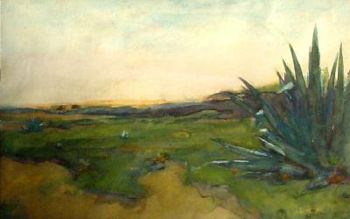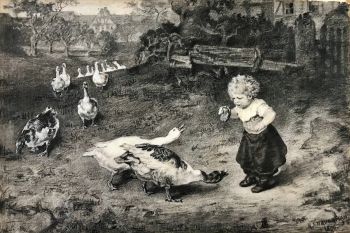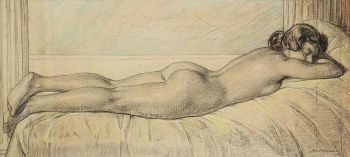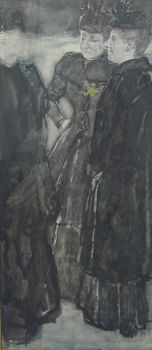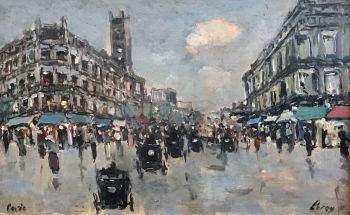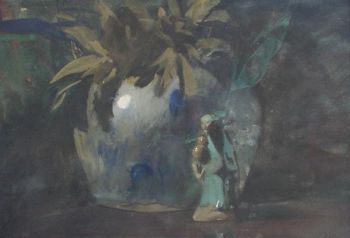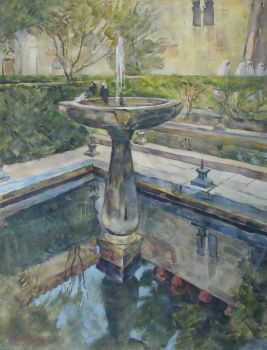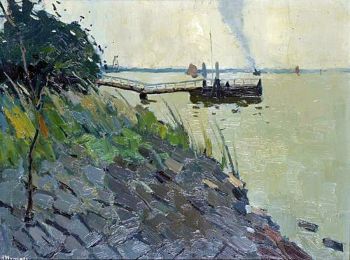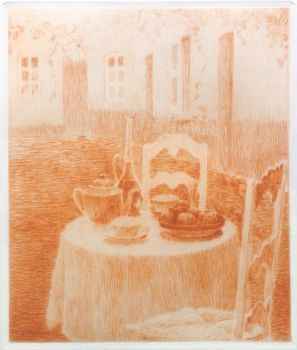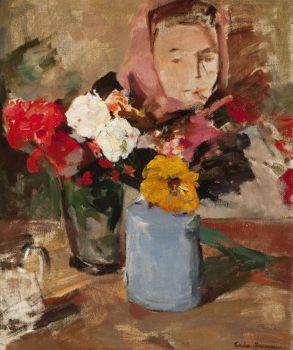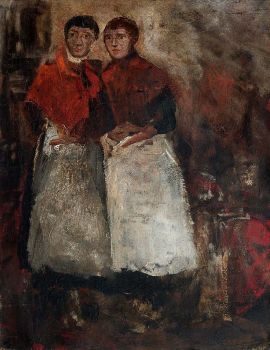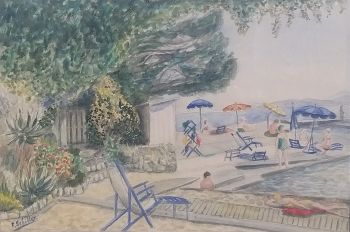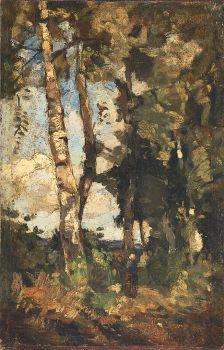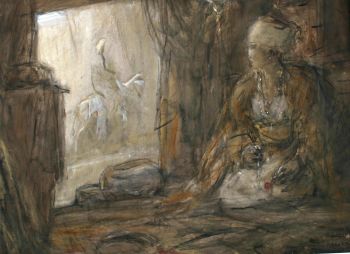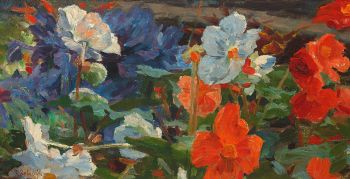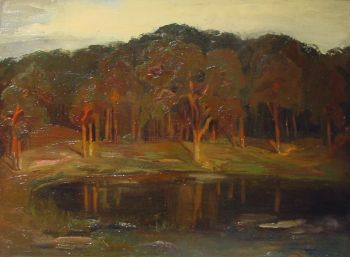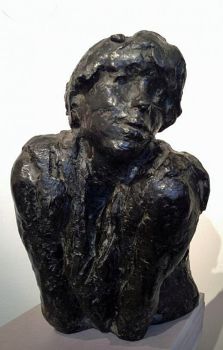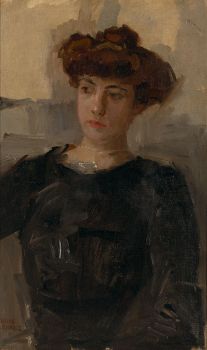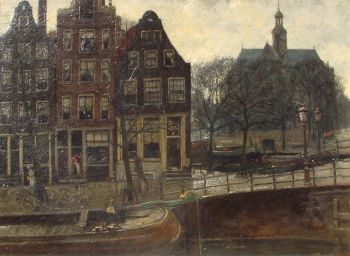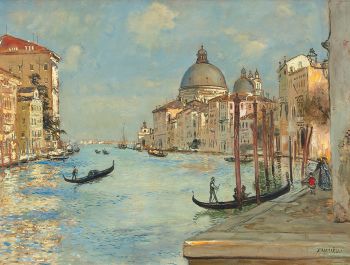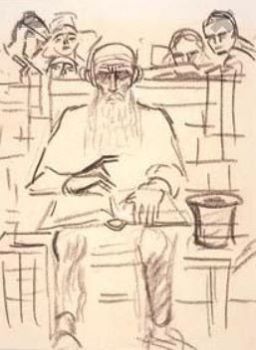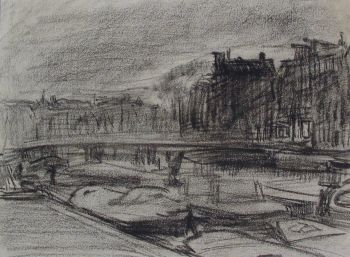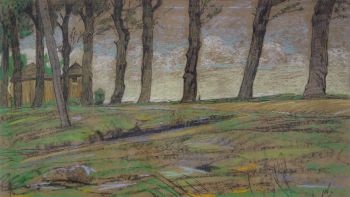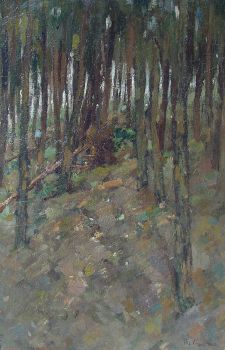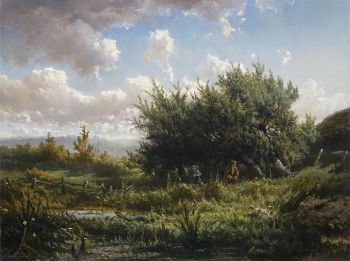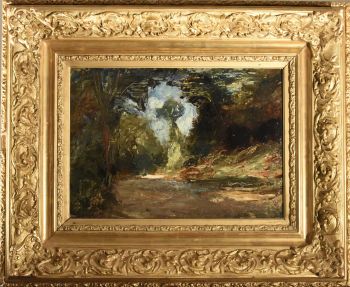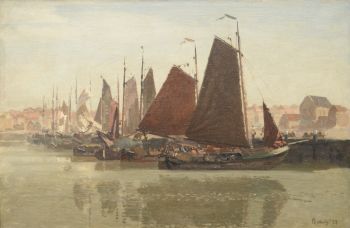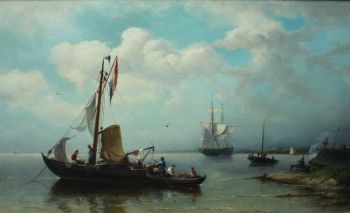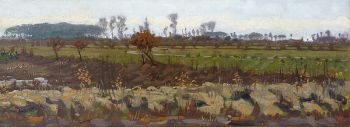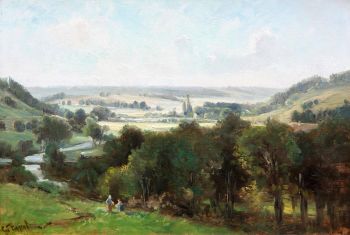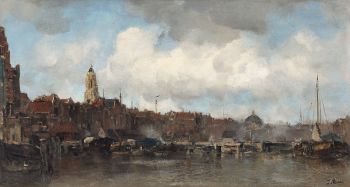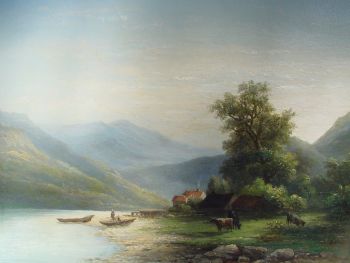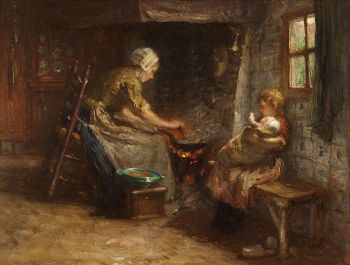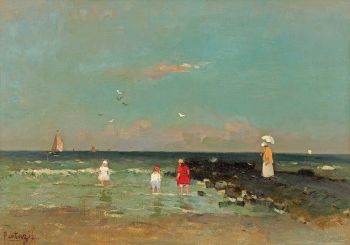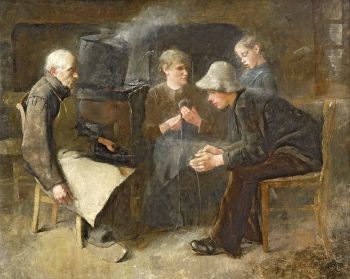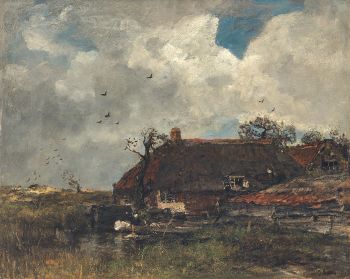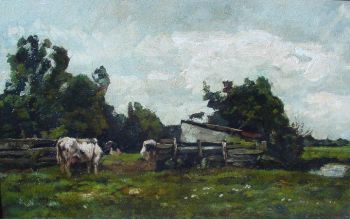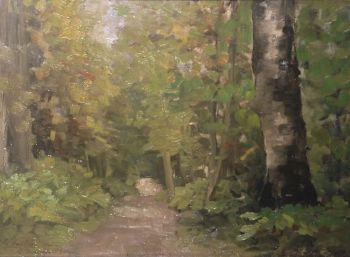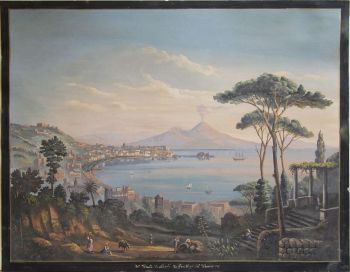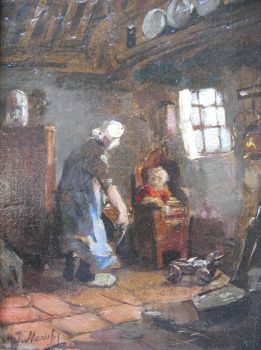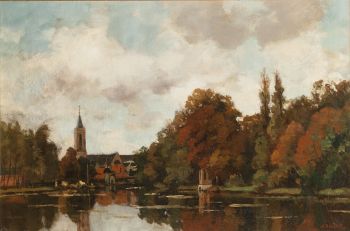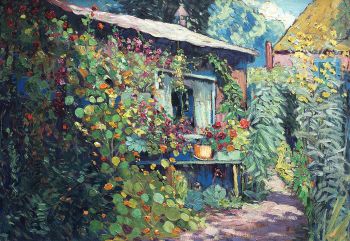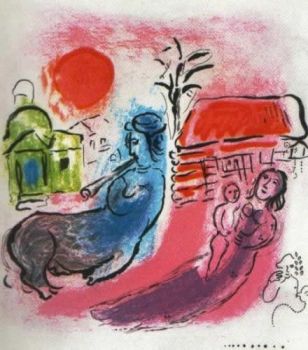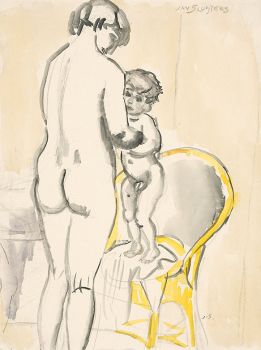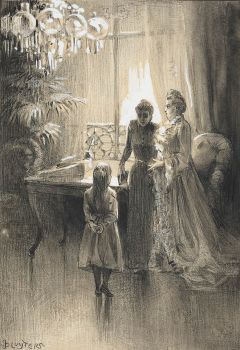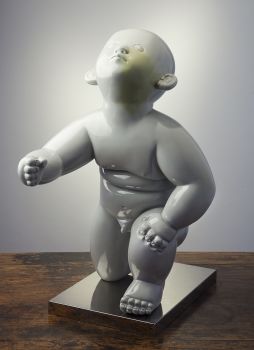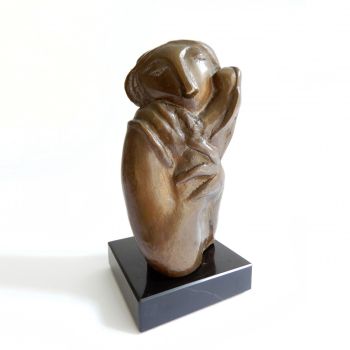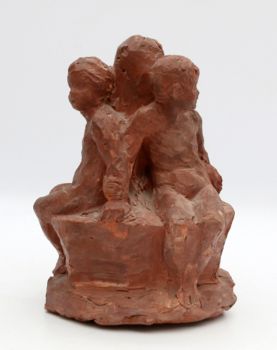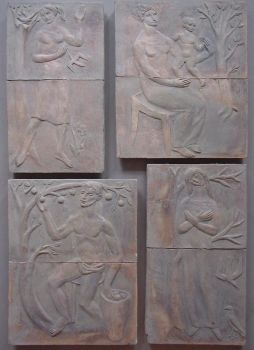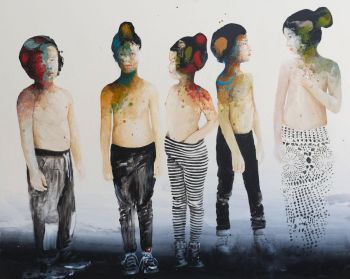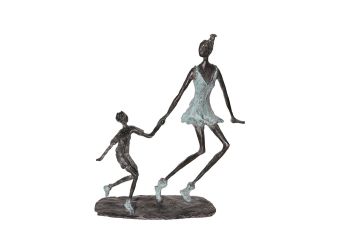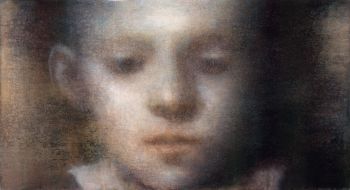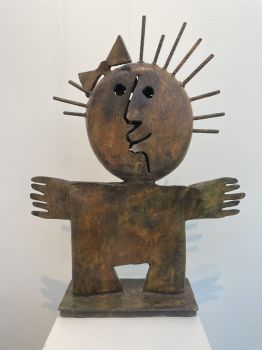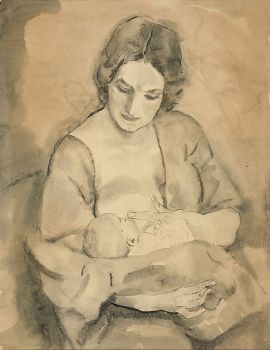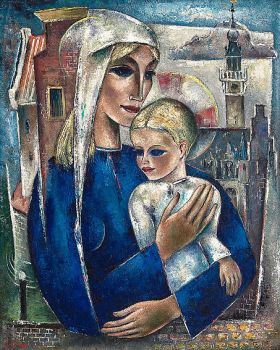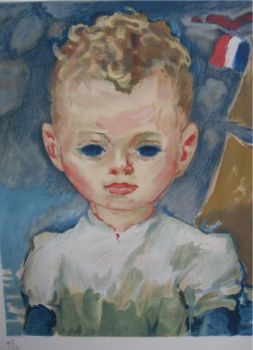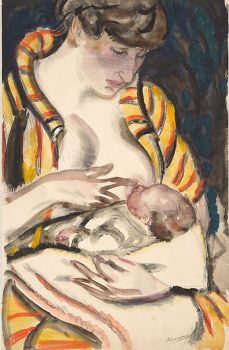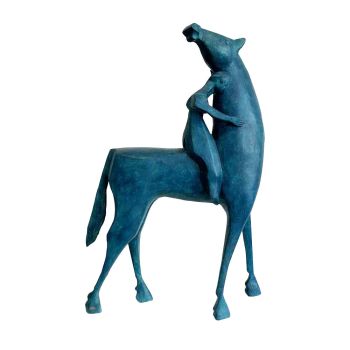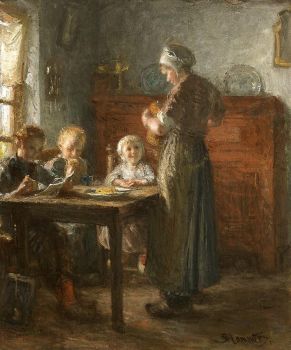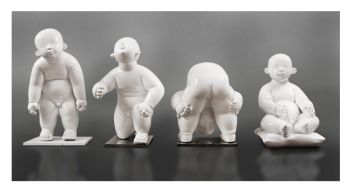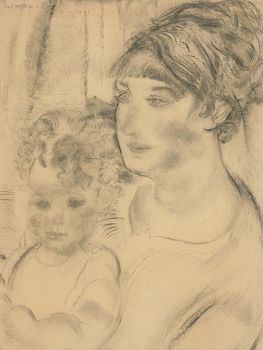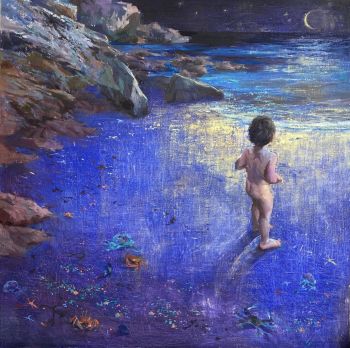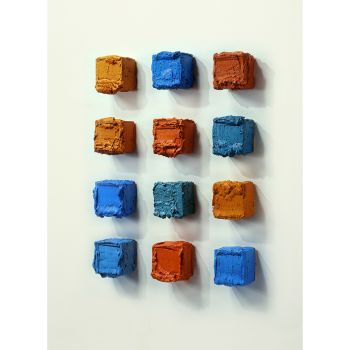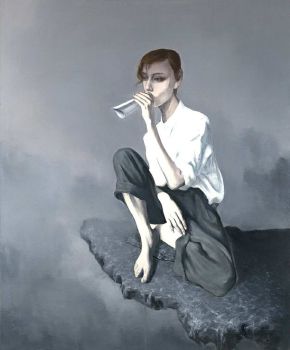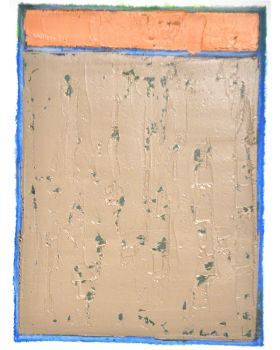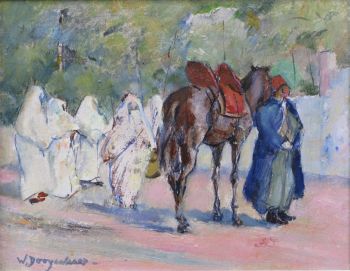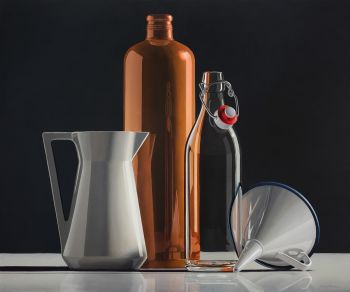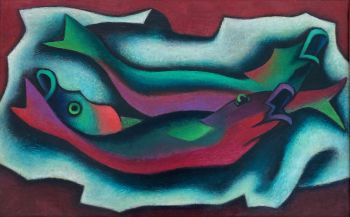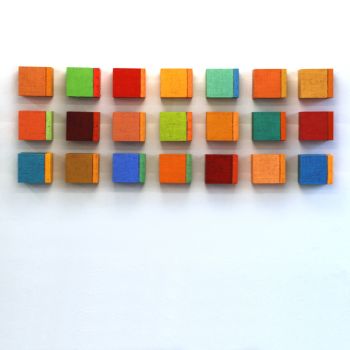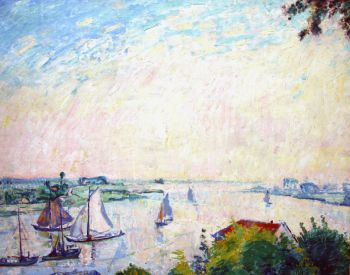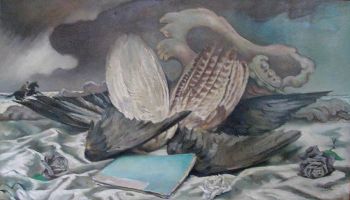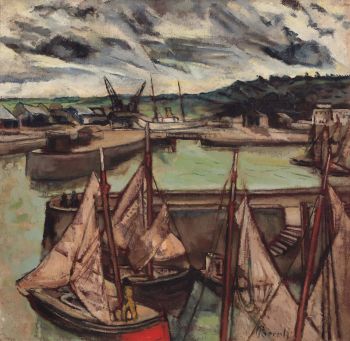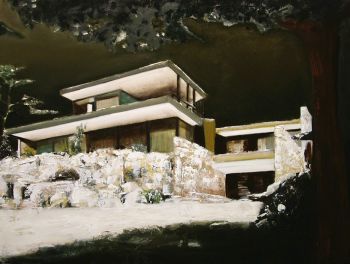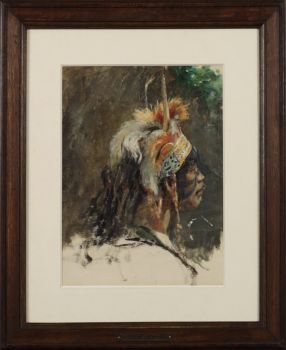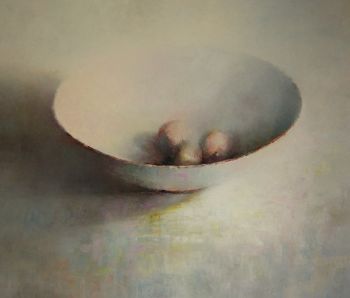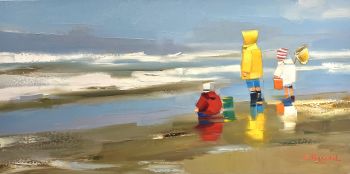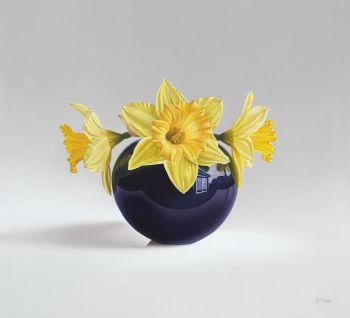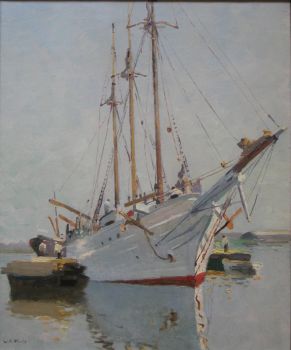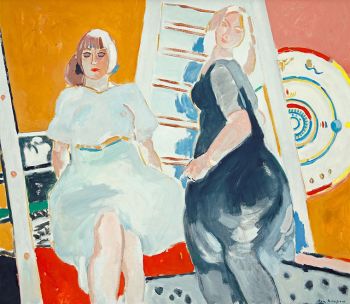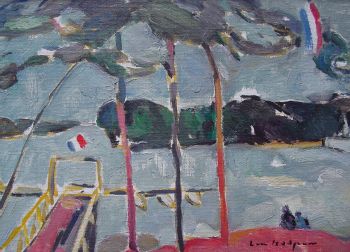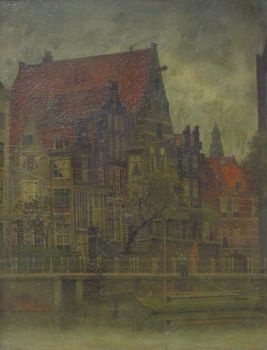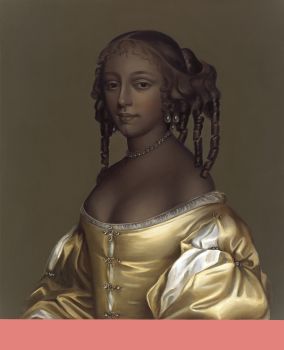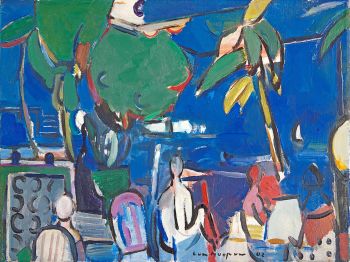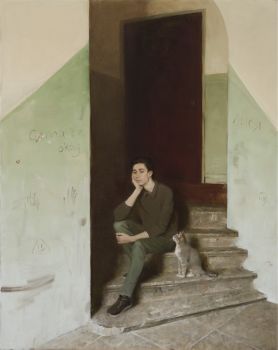Mother and child 1860
Hendrik J. Haverman
ÖlfarbeFarbe
55 ⨯ 40 cm
ConditionExcellent
Derzeit nicht über Gallerease verfügbar
- Über KunstwerkHendrik Jan Haverman (1857-1928) belonged to the group of Dutch artists known as the' Tachtigers', meaning the 'Eighties', because these artists started their careers around the eighties of the nineteenth century. They were also called the 'Impressionists of Amsterdam'. Together with his collegues Jan Toorop, George Breitner and Isaac Israels Hendrik Haverman was one of the leading figures of this movement.
Oil on canvas, signed. Label at the backside ‘Stedelijk Museum Amsterdam’.
The painting was bought in 1907 by the Vereeniging tot het vormen van een Openbare Verzameling van Hedendaagsche Kunst te Amsterdam’ (Association to form a Public Collection of Contemporary Art in Amsterdam) from the auction of the Fine Arts Academy Fund, created in memory of (professor) August Allebé.
As the Association did not have a storage space (but a good relation with the Stedelijk Museum), the work has been stored in the museum depot for many years. But at a certain time the Association decided to dispose the work again, which resulted in selling this painting at the auctionhouse of Frederik Muller in April 1956. - Über Künstler
Hendrik Johannes Haverman (23. Oktober 1857, Amsterdam - 11. August 1928, Den Haag) war ein niederländischer Künstler; vor allem für seine Porträtzeichnungen bekannt.
Er studierte an der Rijksakademie van beeldende kunsten in Amsterdam und an den Kunstakademien in Antwerpen und Brüssel.
Er studierte unter anderem bei August Allebé und Hendrik Valkenburg (1826-1896). Er gab seinerseits Privatunterricht bei Edmée Broers (1876-1955), Meta Cohen Gosschalk, Maria Adeline Alice Schweistal (1864-1950) und Pauline Suij; zu einer Zeit, als Frauen nicht zur Rijksakademie zugelassen wurden.
1892 erhielt er eine königliche Subvention, um seine Arbeit zu unterstützen. Die Ausgabe von Camera Obscura von Nicolaas Beets aus dem Jahr 1901 enthält ein Porträt des Autors von Haverman.
Er war auch Kunstkritiker und schrieb zahlreiche Artikel für De Gids, die älteste niederländische Literaturzeitschrift.
1918 gab es im Pulchri Studio in Den Haag eine große Retrospektive seiner Werke. Die erste Ausstellung seiner Werke nach seinem Tod fand 2008 bei Pygmalion Visual Arts in Maarssen statt.
Artwork details
Related artworks
- 1 - 4 / 6
Jan Voerman sr
Still Life with flowers in a Chinese figurine1850 - 1900
Preis auf AnfrageKunsthandel Pygmalion
Carel Nicolaas Storm van 's Gravesande
View on Venice1841 - 1924
Preis auf AnfrageKunsthandel Pygmalion
Raoul Hynckes
Riverview with scaffolding (near Kinderdijk, the Netherlands)1913 - 1924
Preis auf AnfrageKunsthandel Pygmalion
Isaac Israels
"Een essayeuse bij het modehuis Hirsch"1865 - 1934
Preis auf AnfrageStudio 2000 Art Gallery
1 - 4 / 24Corstiaan Hendrikus de Swart
Mountain landscape with Lake1838 - 1900
Preis auf AnfrageKunsthandel Pygmalion
Bernardus Johannes Blommers
Het bereiden van de maaltijd1870 - 1914
Preis auf AnfrageStudio 2000 Art Gallery
1 - 4 / 24Jan Sluijters
Greet met Jantje, Moeder met kind, naakt op een stoel staand1900 - 1940
Preis auf AnfrageStudio 2000 Art Gallery
 Kuratiert von
Kuratiert vonGallerease Magazine
1 - 4 / 24Corstiaan Hendrikus de Swart
Mountain landscape with Lake1838 - 1900
Preis auf AnfrageKunsthandel Pygmalion
Paul Hugo ten Hoopen
Fin de Saison/End of the season1950 - 2000
Preis auf AnfrageKunsthandel Pygmalion
1 - 4 / 24


